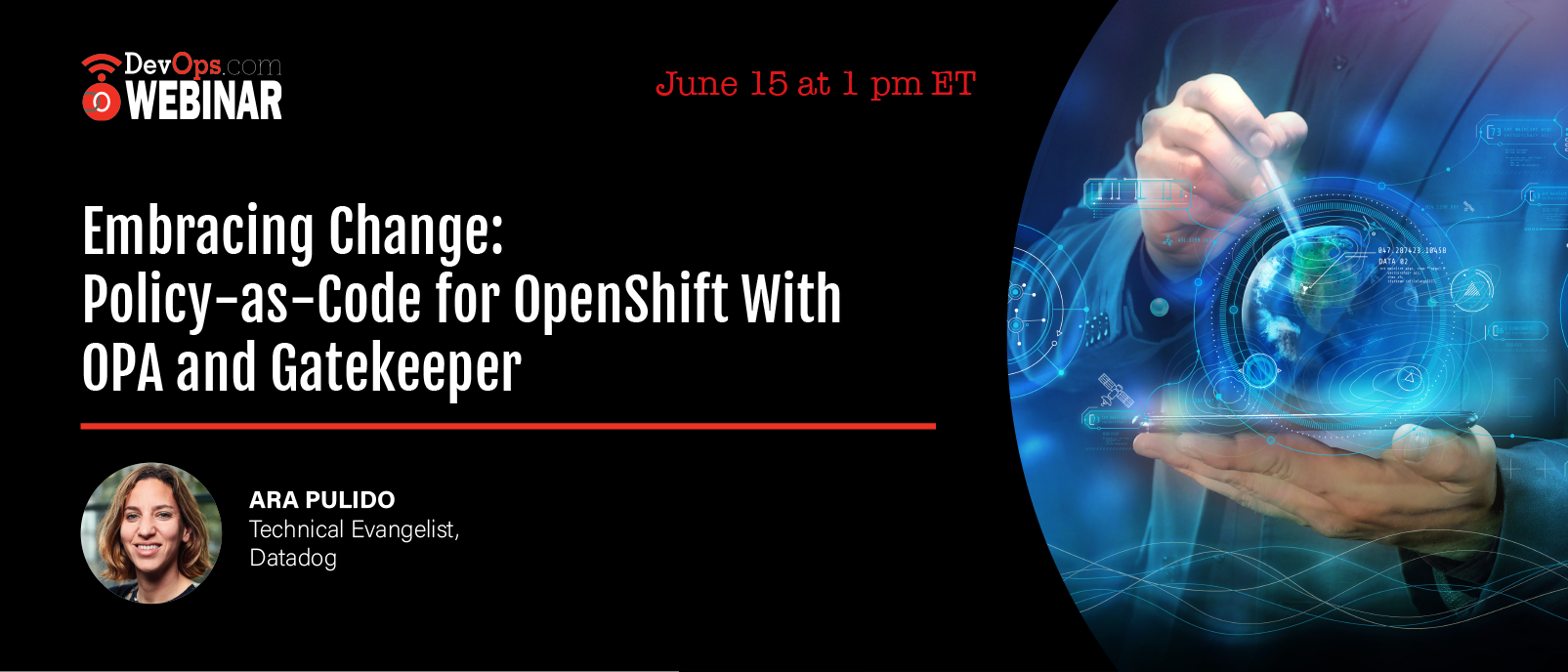Embracing Change: Policy-as-Code for Openshift With Opa and Gatekeeper
Webinar
Think About Your Audience Before Choosing a Webinar Title

Sponsored by DATADOG & RED HAT
Tuesday, June 15, 2021
1 p.m. ET
What You’ll Learn in This Webinar
Kubernetes provides a native Role based access control (RBAC) authorization scheme, allowing cluster operators to define rules to define which operations users or services can do against a particular Kubernetes object.
As more enterprises migrate to cloud native environments like Kubernetes or Openshift, RBAC alone presents limitations. The need for more scalable ways to define and enforce fine-grained policies increases.
- How can I limit the number of replicas of a pod for certain users?
- How can I ensure that all images come from trusted registries?
- How can I have full visibility of potential policy violations?
Open Policy Agent (OPA) is a CNCF incubating project that aims to provide a standard way to define policy in cloud native environments and Gatekeeper is an admission controller webhook that enforces OPA policies for Kubernetes and Openshift.
In this webinar we will demo Gatekeeper for Openshift environments. You’ll learn how to adopt policy-as-code techniques and how you can integrate Gatekeeper with your existing tools. We will also show you how Datadog can give you full visibility of your Gatekeeper environment.
Ara Pulido
Technical Evangelist - Datadog
Engineer - InstacartEngineer - InstacartEngineer - InstacartEngineer - InstacartEngineer - InstacartEngineer - Instacart







